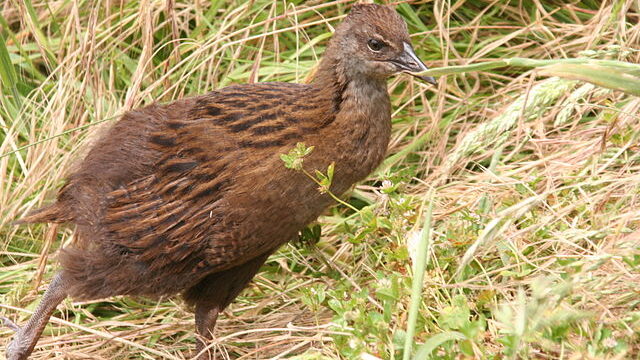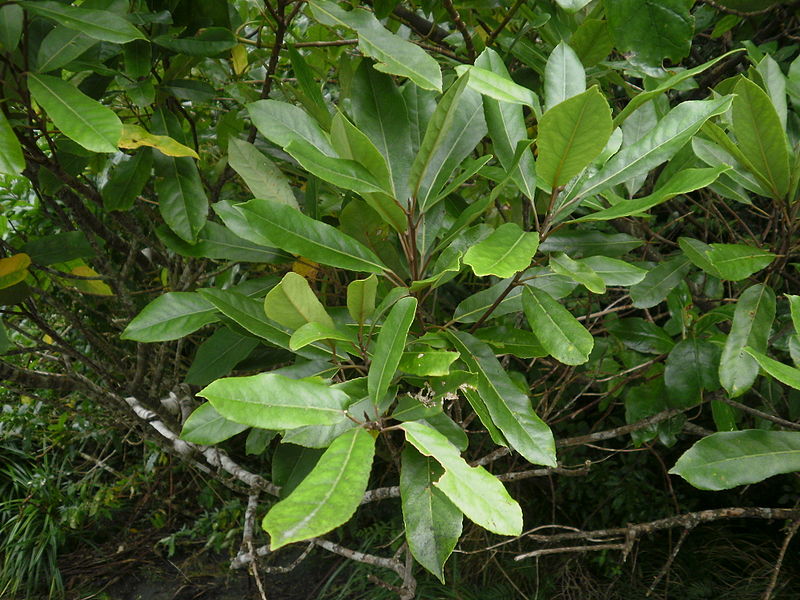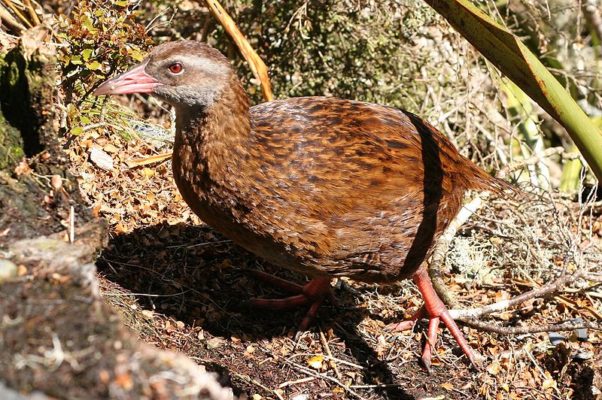Weka don’t tend to be the first bird chosen for reintroduction in recovering habitats. Their destructive and predatory tendencies make them controversial residents in restoration projects and they’ve even been removed from some sanctuary islands to make life safer for other native birds.
Note: We are re-sharing our articles. This article was originally published on August 23, 2018.

But research looking at native plant seed dispersal shows the complexity of plant-bird relationships and shines a positive light on the contribution of weka to the overall ecosystem.
There’s more going on in our forests than the casual observer realises and it seems that weka have an important role to play. Fruiting native plants face several modern-day challenges including a decline in the fruit-eating birds which used to eat, poo and distribute their seeds and an increase in rodents and other introduced mammals which may also eat or damage their fruits, but don’t necessarily poo and distribute viable seed in return.
The study was carried out by University of Canterbury and Department of Conservation researchers Joanna K. Carpenter, Dave Kelly. Elena Moltchanova and Colin F. J. O’Donnell and published in the journal Ecology and Evolution.
“We tested the impact of frugivore (fruit-eater) declines and invasive seed predators on seed dispersal for an endemic tree, hinau (Elaeocarpus dentatus), by comparing seed dispersal and predation rates on the mainland of New Zealand with offshore sanctuary islands with higher bird and lower mammal numbers. We used cameras and seed traps to measure predation and dispersal from the ground and canopy, respectively.”

Only a few native species are known to eat hinau fruits.
“The only extant frugivores recorded consuming hinau fruits are volant (flying) kereru and kokako, and flightless weka and brown kiwi, three of which (kokako, brown kiwi, and weka) are severely range restricted. Additionally, rats and feral pigs have been recorded destroying hinau seeds, and brushtail possums commonly eat the flesh from the fruits and drop the seeds undispersed below the parent tree. Consequently, hinau could be suffering from dispersal limitation across most of the mainland where mammalian seed predators are common and few of its dispersers occur.”
It seems high-flying native birds up in the forest canopy (kereru and kokako) aren’t doing much eating and dispersing.
“We found that canopy fruit handling rates (an index of dispersal quantity) were poor even on island sanctuaries (only 14% of seeds captured below parent trees on islands had passed through a bird), which suggests that hinau may be adapted for ground‐based dispersal by flightless birds.”
Scientists have speculated that seeds that were adapted for dispersal by flightless birds should fall to the ground when ripe and be conspicuous on the forest floor. Hinau meets that criteria.
“Hinau is a lowland forest tree that occurs across the North Island and the West Coast of the South Island. Its fruits are oval purple‐brown drupes measuring 9.2 mm diameter on average, with a high percentage of flesh (the mesocarp, 25% by mass) and a relatively low water content (66%). The seed is protected inside a hard, thick seed coat (the endocarp) so that rodents can only destroy the ripe seeds by gnawing through the seed coat, although kaka split the seed coat while it is still green and consume the developing seed. Fruit crop size is variable from year to year, ranging from <1,000 to more than 30,000 fruits per tree.”
Ground-based dispersal of native fruits in New Zealand has been little studied to date.
“So far, investigations into the functioning of New Zealand’s seed dispersal networks have focused on volant frugivorous birds (flying fruit-eaters). However, flightless frugivores were a substantial part of New Zealand’s historic avifauna, and the role that these species play in seed dispersal is still unclear.”
Ground-based, flightless birds are particularly vulnerable to predators – and so there’s a lot less of them around than there used to be.

“A large proportion of the birds in this guild have gone extinct in New Zealand (66%). One species that remains is the endemic weka (Gallirallus australis), a charismatic flightless rail that has become severely range restricted due to mammalian predation and possible climate‐related starvation. Their large gape and frequent consumption of fruit suggests they may be significant seed dispersers, but their predatory impacts on other native fauna have led to them becoming regarded negatively by conservationists. Their predatory behaviour has resulted in the removal of weka from at least eleven islands where humans had introduced them and even from some islands where they occurred naturally (eg., Anchor Island, Fiordland).”
So how did hinau seed dispersal go at the test sites where weka were present?
“Ground‐based dispersal of hinau was low on the New Zealand mainland compared to sanctuary islands (4% of seeds dispersed on the mainland vs. 76% dispersed on islands), due to low frugivore numbers.”
Weka were found to have conducted the majority of this ground‐based fruit removal on islands. So is it time to rethink our attitudes to weka?
“Weka have disappeared from most regions of the North and South Islands since 1900, and some subspecies are threatened, but weka can be a controversial species in New Zealand conservation because of their predatory impacts on native fauna, including birds, herpetofauna and invertebrates. At times, this has resulted in their exclusion from mainland restoration projects, even in areas where they historically occurred.”
“Importantly, our study has highlighted the positive ecosystem services that they also provide, with weka dispersing the majority of hinau fruits from the ground on island sanctuaries. Given that the low fruit handling rates we recorded from the canopy suggested hinau is not regularly dispersed by volant birds, weka appear to be the primary disperser for hinau where they are present. This is concerning given that weka are now extinct over large tracts of their historic range (including most of the range of hinau) due to a combination of mammalian predation, habitat loss, and possible drought‐induced starvation. Their susceptibility to rapid population declines makes conservation action even more pressing.”
Time to bring back weka perhaps?
The full research report is published in Ecology and Evolution and is freely available online.

